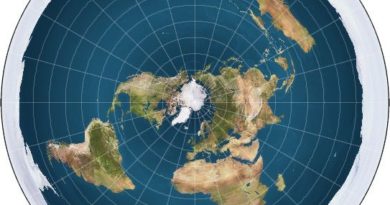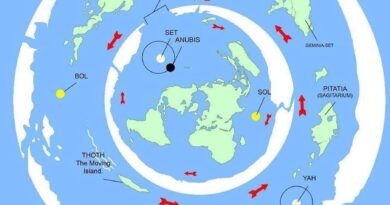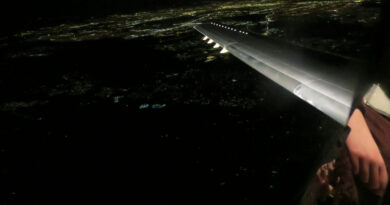What makes the Earth seem flat even though it’s round?
We have all admired the stunning images of Earth from space. But when we are standing in a park or gazing out of a window, why doesn’t the planet seem round? It is all about perspective
read more
Ever since the ancient Greeks first made
observations of the circular Moon and the skies, scientists have known that the Earth is a sphere. We’ve all seen beautiful images of the Earth from space, some
photographed by astronauts and others collected remotely by
orbiting satellites. So why doesn’t our planet look round when we’re standing in a park or looking out a window?
The answer is all about perspective. Humans are pretty tiny creatures living on a really large sphere.
An average adult is between
5 feet and 6 feet 6 inches tall (1.5 to 2 metres), and kids are smaller. Imagine you’re a circus acrobat standing on a ball that’s about 3 feet (1 metre) wide. From on top of the ball, you would see it curving away from your feet in all directions.
Now picture a tiny fly on that circus ball. Its viewpoint would probably be a millimetre or less above the surface. Since the fly is much smaller than the ball, and its view is close to the surface, it can’t see the whole ball.
The Earth is about 42 million feet (12.8 million metres) wide, and even a tall adult’s viewpoint is just 6 feet (about 2 metres) above its surface. There is no way our eyes can take in the size of the spherical Earth when we are standing on it. You couldn’t tell the Earth was a sphere
even if you hiked to the top of Mount Everest, which is 29,035 feet (8,850 metres) above sea level.
The only way to see the curve of the Earth is to fly more than 6 miles (10 kilometres) above its surface. This is because the length of the horizon that we see depends on how high we are above Earth’s surface.
Editor’s Picks
Standing on the ground with nothing blocking our vision, our eyes can see about 3 miles (4.8 kilometres) of the horizon. That’s not enough of the planet’s circumference to see the horizon line begin to show off its curve. Like a fly on a circus ball, we just can’t see enough of the edge where the Earth meets the sky.
To see the whole spherical planet, you would need to hitch a ride
with an astronaut or
on a satellite. This would give you a full view of Earth from a much greater distance.
Big commercial airliners
also can fly high enough to give glimpses of Earth’s curvature, although pilots have a much better view from the front of the plane than passengers get from side windows.
Not quite a sphere
Even from space, you wouldn’t detect something important about Earth’s shape: It’s not perfectly round. It’s actually
a slightly oblate spheroid, or an ellipsoid. This means it is a little bit wider around the equator than it is tall, like a sphere that someone sat on and squashed a little bit.
This is caused by Earth’s rotation, which creates centrifugal force – the same force that would cause you to fly off a spinning merry-go-round if you didn’t hold on. This force produces a slight bulge at the planet’s waistline.
Topographic features on Earth’s surface, such as mountains and deep-sea trenches, also distort its shape slightly. They cause small variations in the strength of
Earth’s gravitational field – the force that pulls all objects on Earth downward, toward the planet’s centre.
Earth science,
the field that I study, has
a branch called geodesy that’s devoted to studying Earth’s shape and how it’s positioned in space. Geodesy informs everything from building sewers and making accurate maps of sea level rise to launching and tracking spacecraft. It’s an important area of current scientific research and a reminder that we are still learning about this amazing planet we call home.
Kelly R. MacGregor, Professor of Geology, Macalester College
This article is republished from
The Conversation under a Creative Commons license. Read the
original article.


